Kidney Stones
|
Duncan MacDonald
Jakarta 6 February 2014
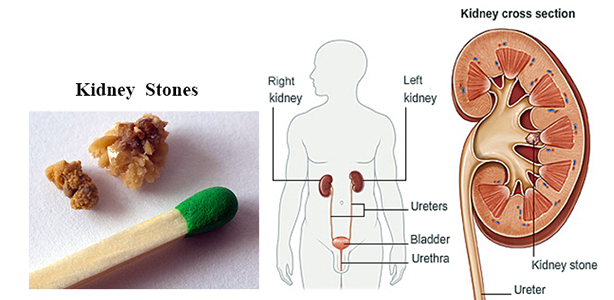
What Are Kidney Stones ?
The kidneys keep the body’s chemistry in balance by removing waste products from the blood and excess water. The clean blood is then released back into your bloodstream and the impurities are passed out of the body as urine. They also regulate blood pressure and stimulate red blood cell production.The waste products in the blood can occasionally form crystals that develop inside your kidneys. Over time the crystals may build up to form a hard stone-like lump.
Kidney stones are hard rock-like crystals of salt and minerals which fluctuate in size and shape. The stones can be as small as a grain of sand, or grow to the width of a golf ball. They can develop in one or both kidneys.
Once the kidney stone is formed, your body will try to pass it out of your kidneys as urine. Small stones may be passed out painlessly through the kidneys, kidney tubes and bladder. It may even go undetected. However it is fairly common for a stone to block part of the ureter (the tube connecting the kidney to the bladder) or the urethra (the tube which passes urine out of the body). If this happens it can cause severe pain in the abdomen or groin and sometimes causes a urinary infection. Most stones pass on their own, but medical procedures are used to remove some kidney stones. [1]
How common are kidney stones ?
Kidney stones are one of the most common disorders of the urinary tract. Approximately 4-8% of Australians suffer from kidney stones at some time. The lifetime risk of developing kidney stones is 1-in-10 for Australian males and 1-in-35 for women. The chances of developing a stone increases if you have a family history of stones, and as you age. Urinary tract stones are more common in children in developing countries and amongst indigenous Australians.
After having one kidney stone, the chance of getting a second stone is about 5-10% each year. Approximately 30-50% of people with a first kidney stone will get a second within five years and then the risk declines. However some people continue developing kidney stones their entire life. [2]
In China in 2008, a toxin added to milk named melamine caused many children to develop kidney stones. Throughout history Kidney stones have been discovered. Scientists found evidence of kidney stones in a 7,000-year-old Egyptian mummy.
The number of people in the United States with kidney stones has been increasing over the past 30 years. In the late 1970s, less than 4% of the population had had kidney stones; by the early 1990s, more than 5%. The rates are continuing to increase.
The peak age for stones is between 20 years and 50 years. White Americans are more prone to develop kidney stones than African Americans, and men are much more likely to develop stones than women. Other diseases like high blood pressure, diabetes, obesity, osteoporosis, chronic diarrhoea, or kidney cysts might increase the risk of stones. Diabetes increases the risk of developing kidney stones, especially in younger women. Only about 25% of kidney stones occur in people with a family history of stones. Doctors say they're seeing increasing numbers of children with kidney stones. After bariatric (weight loss) surgery, in which the digestive tract is altered, kidney stones are more common. Levels of oxalate are much higher after this surgery. [3]
There are four main types of stones
♦ Calcium stones are the most common. They are formed from calcium combined with phosphate or oxalate (a salt) The root and/or leaves of rhubarb and buckwheat are high in oxalic acid.
Other edible plants that contain significant concentrations of oxalate (which is bad for you) include - in decreasing order;
◊ star fruit (carambola)
◊ black pepper
◊ parsley
◊ poppy seed
◊ amaranth
◊ spinach
◊ asparagus
◊ chard
◊ beets
◊ cocoa
◊ chocolate
◊ most nuts
◊ most berries
◊ miso
◊ sweet potatoes
◊ fishtail palms
◊ beans
♦ Struvite stones, are caused by a urine infection. These are often horn shaped and quite large.
♦ Uric acid stones are often softer than other forms of kidney stones.
♦ Medical condition, - a small number of people get kidney stones because of this, and can lead to high levels of calcium, oxalate, cystine or uric acid in the body.
Kidney Stone Symptoms
A kidney stone may not cause symptoms until it moves around within your kidney or passes into your ureter (the tube connecting the kidney and bladder). At that point, these signs and symptoms may occur:
● Severe pain in the side and back, below the ribs
● Pain that spreads to the lower abdomen and groin
● Pink, red or brown urine
● Cloudy or foul smelling urine
● Nausea and vomiting
● Persistent urge to urinate
● Urinating more than usual
● Fever and chills if an infection is present
Make an appointment with your doctor if you have any symptoms that worry you. Seek immediate medical attention if you experience:
○ Pain so severe that you can’t sit still or find a comfortable position
○ Pain accompanied by nausea and vomiting
○ Pain accompanied by fever and chills
○ Blood in your urine
○ Difficulty passing urine [4]
How Are Kidney Stones Detected ?
Many stones are found by chance during tests for other conditions. Specific kidney stone tests include:
■ Ultrasounds
■ CT scans
■ X-rays including an intravenous pyelogram or IVP, where dye is injected into the bloodstream before the x-rays are taken
Analysis of a stone is very useful, so if you pass one, try to collect a sample and take it to your doctor. Detecting and diagnosing stones helps to decide on the treatment. Urine and blood tests can assist in finding out the cause of the stone.
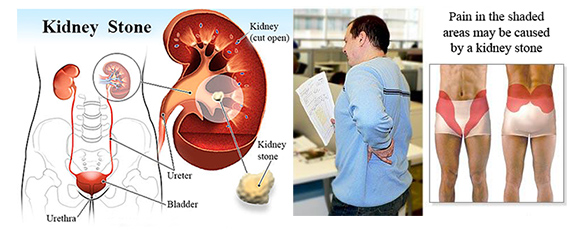
Kidney Stone Treatment
Most stones can be treated without surgery - 90% will pass by themselves within 3 to 6 weeks. In this situation the only treatment required is pain relief. Pain can be so severe that hospital admission and very strong painkillers may be needed. However if a stone doesn’t pass and blocks urine flow or causes bleeding or an infection it may need to be removed. New surgical techniques have reduced hospital stay time to as short as 48 hours. Other treatments include:
■ Extracorporeal Shock-Wave Lithotripsy (ESWL): Ultrasound waves are used to break the kidney stones into smaller pieces, which can pass out with the urine. It is used for stones less than 2cm in size.
■ Percutaneous Nephrolithotomy: A small cut is made in your back then a special instrument is used to remove the kidney stone.
■ Endoscope Removal: An instrument is inserted into the urethra, passed into the bladder then to where the stone is located. It allows the doctor to remove the stone or break it up so it can pass more easily.
■ Surgery: If none of these methods are suitable, the stone may need to be removed using traditional surgery. This will require an incision in your back to access your kidney and ureter to remove the stone.
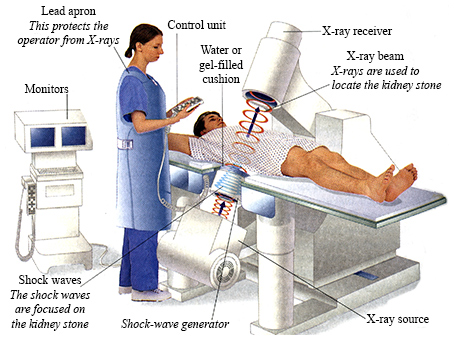
Patient undergoing Lithotripsy
How Can I prevent Kidney Stones ?
If you have had one stone already, these are some tips for reducing your risk of further stones;
● Talk to your doctor about the cause of previous stones
● Ask your doctor to check the medications you are on to see if they might be causing your stones. Do not stop your medications without talking to your doctor.
● Get quick and proper treatment of urinary infections.
● Avoid dehydration. Drink enough fluids to keep your urine volume level at or above two litres a day. This can halve your risk of getting a second stone by lowering stone-forming chemicals.
● Avoid too much tea or coffee.
● Lemons to the rescue. Lemon juice is thought to be helpful mainly because it contributes extraordinary amounts of citrate and citrate may help in two ways;
(i) it makes the urine less acidic (discouraging stone development) and;
(ii) it can bind with calcium in the urine, potentially reducing the amount of calcium available to form calcium oxalate stones.
● Other citrus juices may reduce the risk of stones, particularly orange, and cranberry.
● Mineral water cannot cause kidney stones because it contains only trace elements of minerals.
● Reducing salt often lowers the risk of calcium containing stones. Don’t add salt while cooking and leave the saltshaker off the table. Choose low or no salt processed food.
● Lowering calcium below that of a normal diet is only necessary in some cases where absorption of calcium from the bowel is high. A low calcium diet has not been shown to be useful in preventing the recurrence of kidney stones and may worsen the problem of weak bones. People with calcium containing stones may be at a greater risk of developing osteoporosis. Discuss this with your doctor.
● Don’t drink more than 1 litre per week of liquids with phosphoric acid, which is used to flavour carbonated cola and beer.
Always talk to your doctor before making changes to your diet.
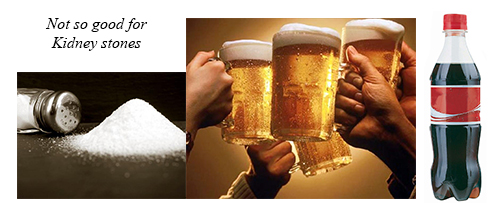
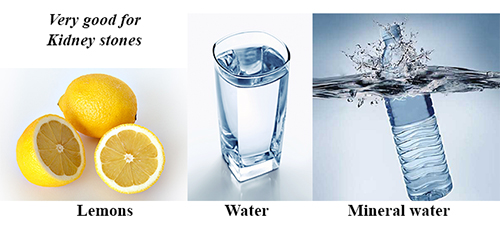
CONCLUSION
More needs to be known about various foods and beverages and their impact on kidney stone formation. In the meantime, you can definitely do the things that make sense for other health reasons, like drinking lots of water - particularly if you live in hot climates, not overdoing animal protein and eating less sodium and salty foods. [5]
Life's like that
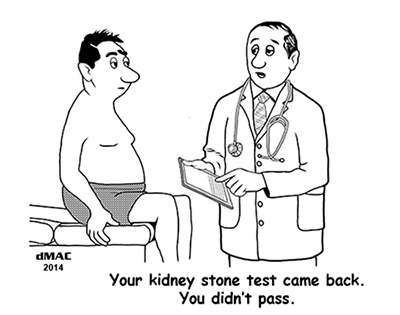
This Digest article can be downloaded as a FREE e-book on Smashwords.
Available on iPad / iBooks, Kindle, Nook, Sony, & most e-reading apps including Stanza & Aldiko.
Just click the following link
>> download free e-book dMAC Digest





